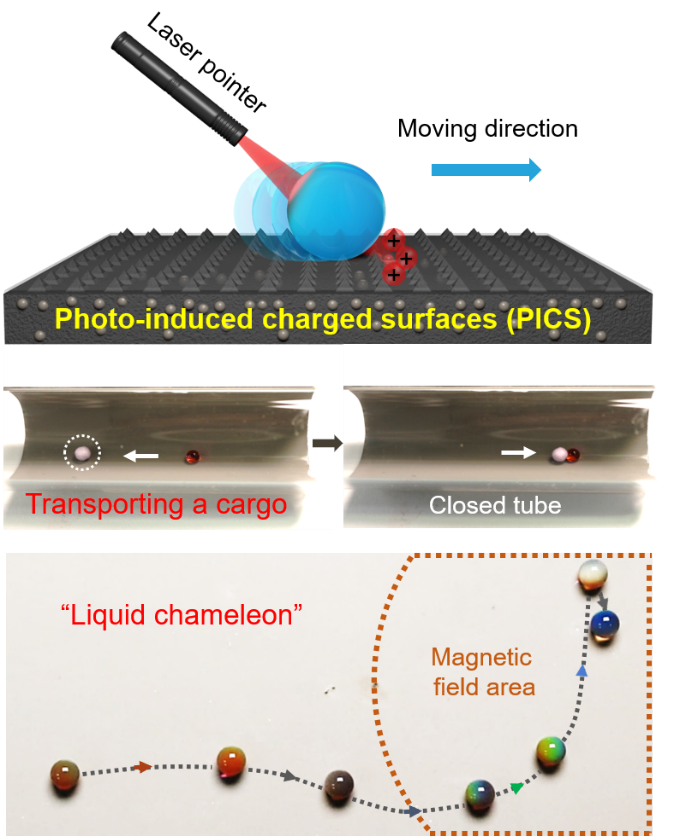Manipulating droplets is essential in fundamental studies and practical applications, ranging from chemical reactions to bio-analysis. Droplet control by light offers remote, contactless management with astounding temporal and spatial precision. Meanwhile, high-performance and dependable droplet light control is still challenging to achieve.
 Schematic illustrations of light control of droplets. Image Credit: Xuemin Du.
Schematic illustrations of light control of droplets. Image Credit: Xuemin Du.
A new smart material with high-efficiency and long-lasting photo-induced charge regeneration capability has now been reported by a research group headed by Dr Xuemin Du from the Shenzhen Institute of Advanced Technology (SIAT) of the Chinese Academy of Sciences, allowing light control of droplets with superior capabilities and dependability.
On August 17th, 2022, this article appeared in the National Science Review.
Three main elements make up this smart material: micro-sized liquid metal particles with outstanding photothermal and thermal conductive properties, polyvinylidene fluoride trifluoroethylene copolymer with excellent ferroelectric and mechanical behaviors, and micro-pyramidal structures and low-surface-energy fluorinated SiO2 nanoparticle coatings for boosting superamphiphobicity.
Based on the synergistic effect of these components, the photo-induced charged surfaces (PICSs) possess a superior capability of real-time and in-situ photo-induced charge generation upon exposure to light illumination.
Dr Xuemin Du, Study Lead, Shenzhen Institute of Advanced Technology, Chinese Academy of Sciences
Scanning Kelvin probe microscopy, which demonstrated the real-time and in-situ production/disappearance of the free surface charges upon exposure to ON/OFF light irradiation, amply demonstrated this unique charge generation capabilities of the PICS.
Even in harsh conditions, such as high relative humidity (less than 90%) for 72 hours and high temperature (70 °C), the PICS’ ability to generate charges showed no apparent degradation. Even after 10,000 ON/OFF irradiation rounds, the charge density of the PICS remained at consistently high values of 252 pC mm-2 (peak to peak).
“The outstanding efficiency, durability, and stability of the photo-induced charge regeneration in PICS are critical for light control of droplets,” said Dr Du.
The researchers showed that the PICS offered a novel paradigm for manipulating single to numerous droplets while offering high average velocity, infinite range, and multimode motions (such as forward, backward, and rotation).
They also expanded light control of droplets to robotic and biological applications, such as moving a solid cargo in a closed tube, moving through a narrow tunnel, dodging obstacles, detecting changes in the environment through color shifts visible to the unaided eye, making hydrogel beads, moving living cells, and dependable biosensing.
“Our robust and biocompatible PICS not only provides insight into the development of new smart interface materials and microfluidics but also brings new possibilities for chemical and biomedical applications,” said Dr Du.